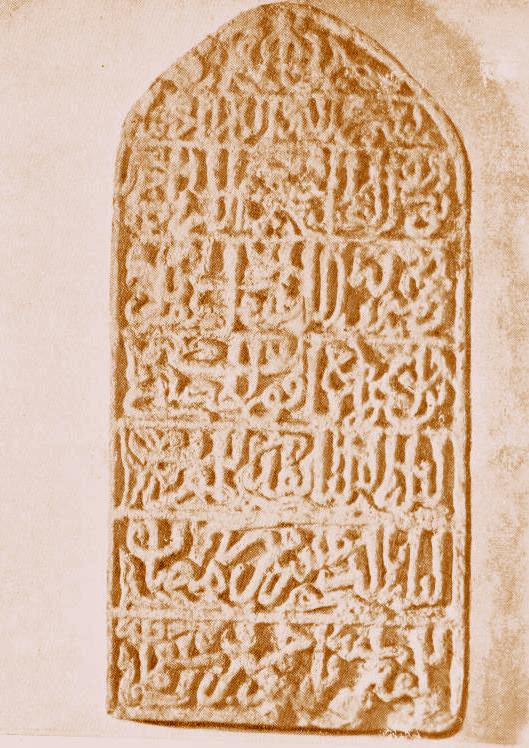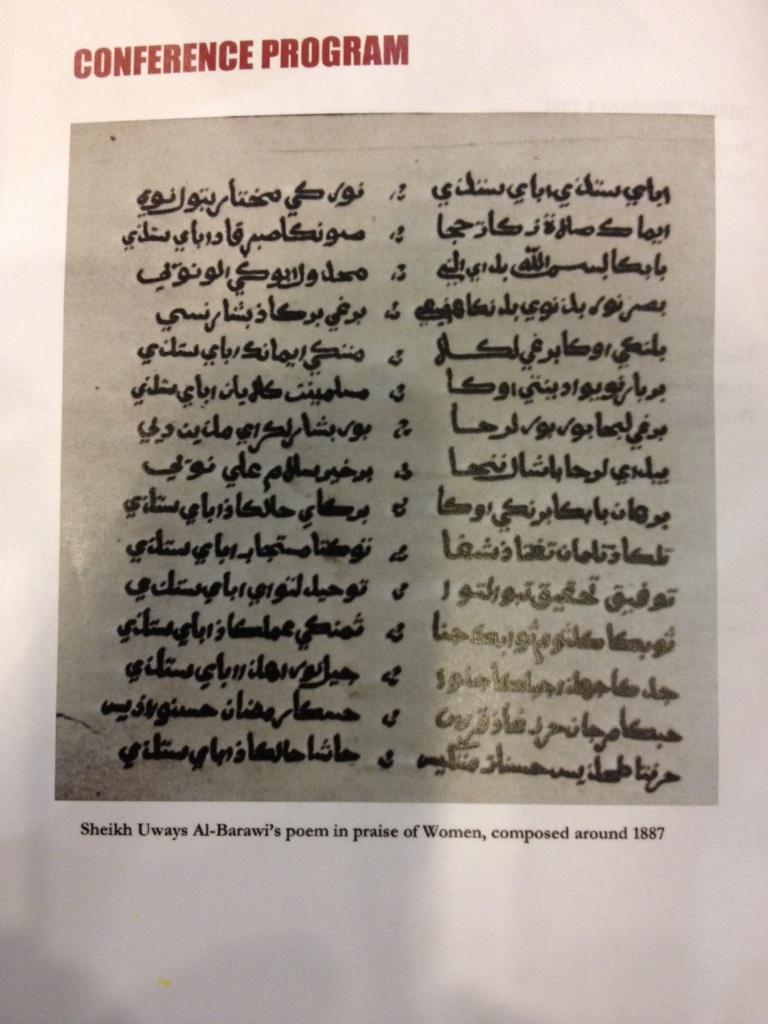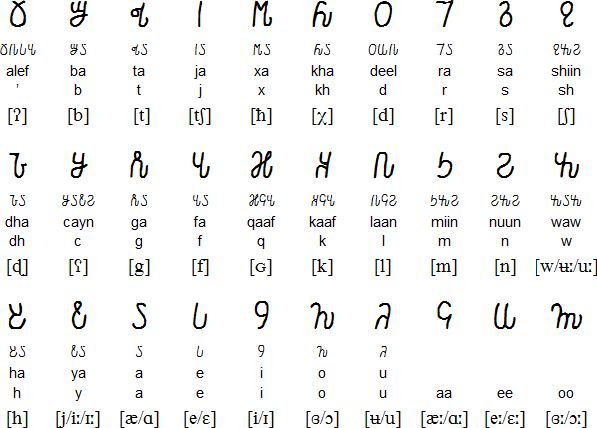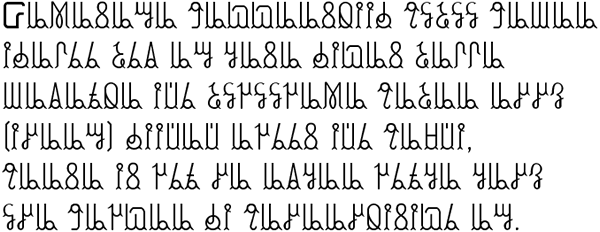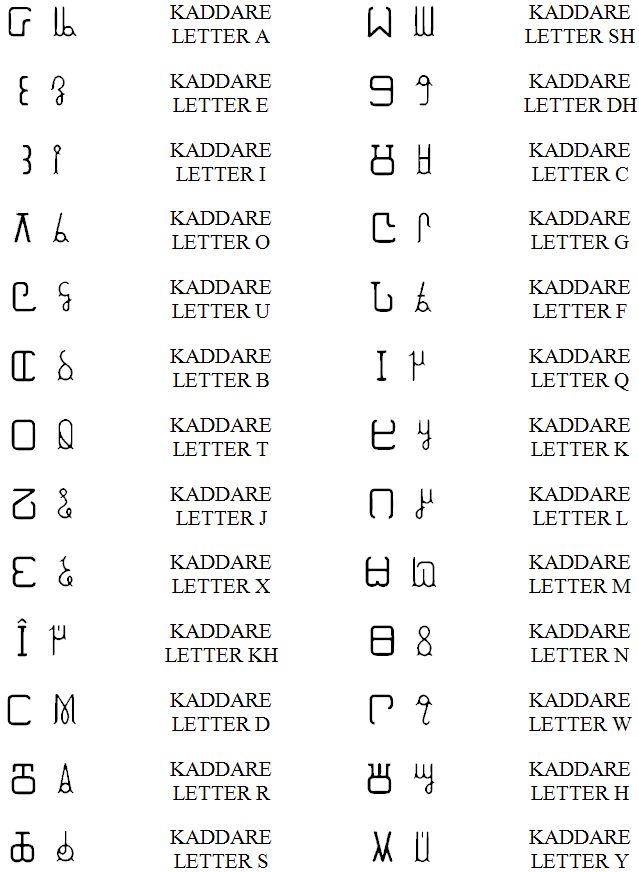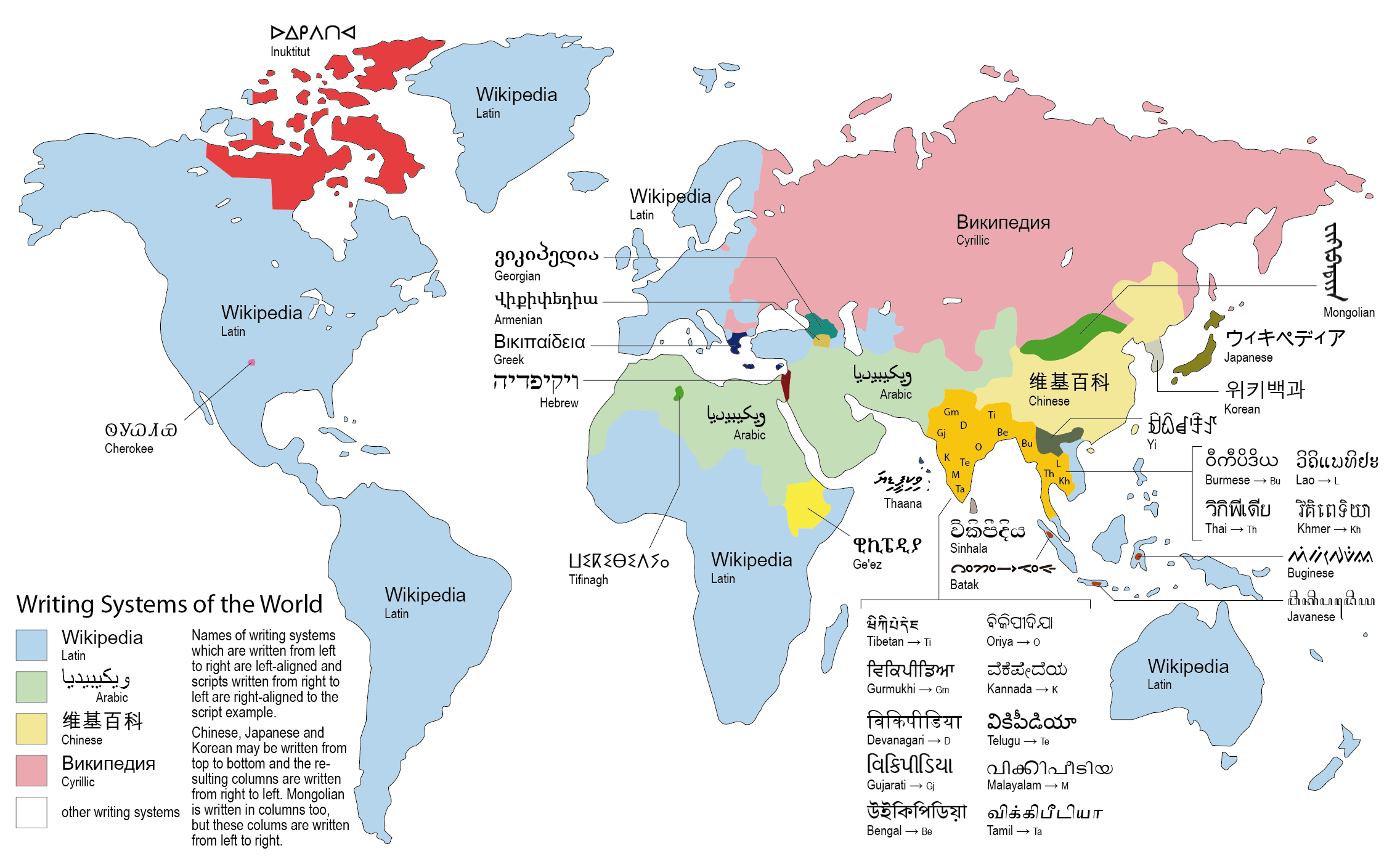Azerbaijan an example of a group of people who've had their languages written in multiple script within the last century.
Until the 1920's they used the revised Arabic script.
"
Azerbaijani is a member of the Western Oghuz branch of the Turkic language family spoken by about 32.2 million people mainly in Azerbaijan, Iran, Georgia, Russia and Turkey, and also in Iraq, Syria and Turkmenistan.
There are two main varieties of the language: North Azerbaijani and South Azerbaijani, which are sometimes classified as separate languages, although there is a fair degree of mutually intelligibility between them.
North Azerbaijani is spoken in Azerbaijan, where is the official language, and also southern Dagestan, in the southern Caucasus Mountains and in parts of Central Asia. There are around 7.3 million native speakers, and another 8 million second language speakers.
South Azerbaijani has about 16.9 million speakers mainly in the northwest of Iran, where it is known as تورکی (Türki), and also in parts of Iraq and Turkey, and in Afghanistan and Syria.
Azerbaijani is closely related to Turkish, Qashqai, Turkmen and Crimean Tatar, and there is a degree of mutually intelligibility between Azerbaijani and Turkish.
The Arabic script was introduced to the Azerbaijan region in the 7th century and continued to be used to write Azerbaijani until the 1920s. Three different versions of the Arabic script were used during this period: the 28-letter Arabic script, the 32-letter Perso-Arabic script and the 33-letter Turkic Arabic script. None of these was ideal for writing Azerbaijani and various reforms were proposed, particularly during the late 19th and early 20th centuries.
In Iran the Azerbaijani language has always been written with a version of the Arabic script and is know as Azeri Turk."
Arabic script
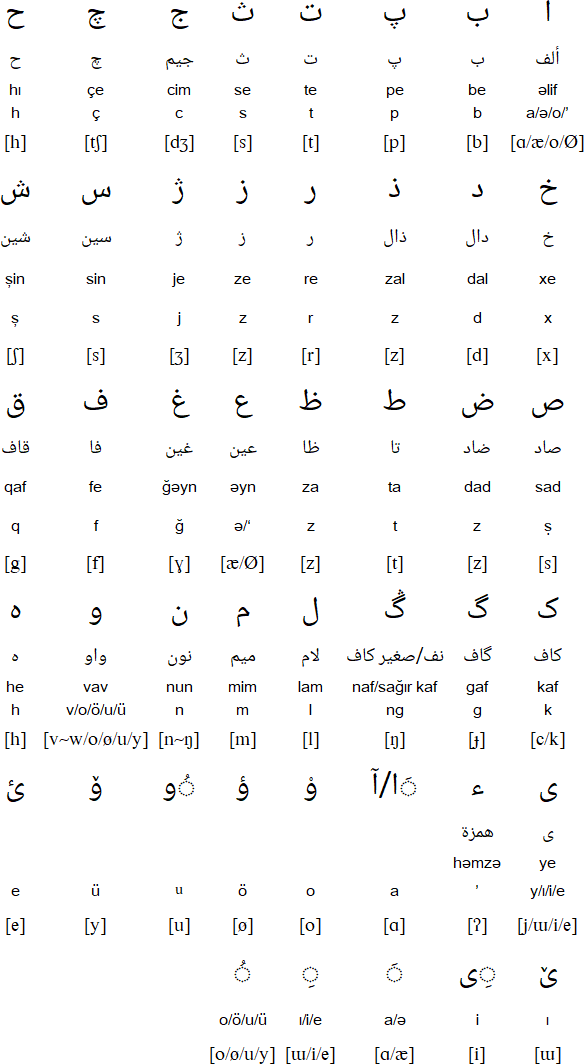
Latin alphabet for Azerbaijani (1922 version)
In 1922 the Latin alphabet, known as Yanalif (new alphabet), was adopted to write Azerbaijani in Soviet northern Azerbaijan. This was essentially an attempt by the Soviet authorities to reduce the influence of Islam in the Turkic republics, all of which used the Arabic script before 1922.
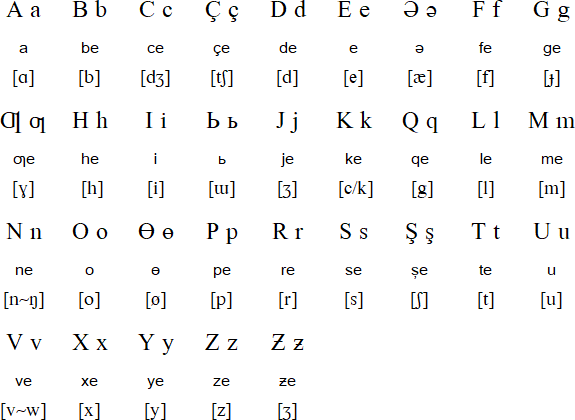
Cyrillic alphabet for Azerbaijani (Азәрбајҹан әлифбасы)
In 1939 the Cyrillic alphabet was imposed by Stalin, who wanted to discourage contact between the Turkic republics and Turkey, and worried about the development of alliances which might undermine the authority of the Soviet Union.
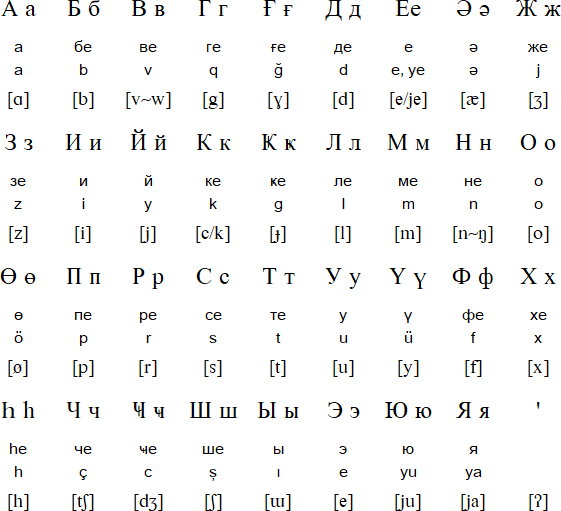
A simplified version of the Cyrillic alphabet was introduced in 1958.
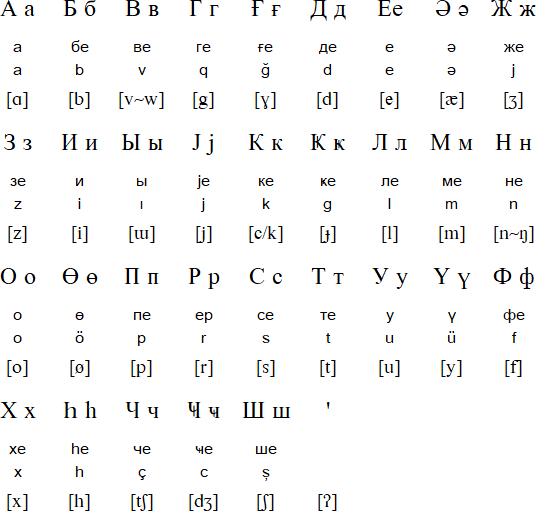
https://en.wikipedia.org/wiki/Tifinagh - Amazigh script
Tifinagh

The Tifinagh alphabet is thought to have derived from the ancient Berber script. The name Tifinagh possibly means 'the Phoenician letters', or possibly from the phrase tifin negh, which means 'our invention'.
Since September 2003, the Tifinagh alphabet children in Moroccan primary schools have been taught to write Tamazight with the Tifinagh alphabet. It is also used by the Tuareg, particularly the women, for private notes, love letters and in decoration. For public purposes, the Arabic alphabet is normally used.
Notable features
Tamazight (Tamaziɣt / ⵜⴰⵎⴰⵣⵉⵖⵜ), a family of Berber languages spoken by between 16 and 30 million people mainly in Morocco and Algeria, and also in Libya, Mali, Niger, Tunisia, Burkina Faso, Egypt and Mauritania.
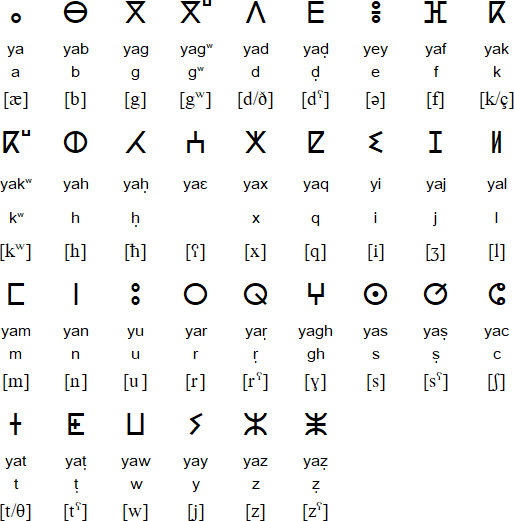
http://www.omniglot.com/writing/tifinagh.htm
Agadez (AWN) | Tifinagh, the traditional writing system of the Amazigh people of North Africa continues to expand, more and more as a means of preserving Amazigh—Tuareg identity, Some two-thirds of the estimated 1.5 million Tuareg living in Niger use their traditional language, Tamacheq, on a daily basis.
It took a long time but, it’s official, now drive through parts of Agadez streets, the largest city in central Niger, and you may be surprised that you’ll find streets name signs in Tamazight Language written in Tifinagh alphabet.
It’s been a long time coming, but it seems increasing demand for implementation of Tamazight’s official status in recent past years by the Tuareg people of Niger has finally kicked some bigwigs into action.
This project aimed to revitalize Tifinagh and changes will also include cities/towns names, and tourism destinations, including historic and natural sites across Agadez and entire Niger in future.
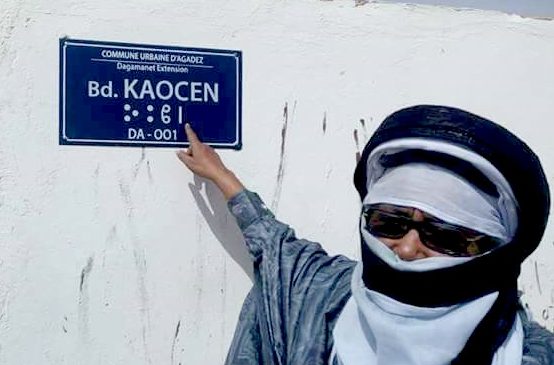
http://www.amazighworldnews.com/agadez-adds-tifinagh-to-street-signs/
Pretty neat script. It's latin counterpart
https://en.wikipedia.org/wiki/Berber_Latin_alphabet
Symbol of solidarity and nationalism.
Until the 1920's they used the revised Arabic script.
"
Azerbaijani is a member of the Western Oghuz branch of the Turkic language family spoken by about 32.2 million people mainly in Azerbaijan, Iran, Georgia, Russia and Turkey, and also in Iraq, Syria and Turkmenistan.
There are two main varieties of the language: North Azerbaijani and South Azerbaijani, which are sometimes classified as separate languages, although there is a fair degree of mutually intelligibility between them.
North Azerbaijani is spoken in Azerbaijan, where is the official language, and also southern Dagestan, in the southern Caucasus Mountains and in parts of Central Asia. There are around 7.3 million native speakers, and another 8 million second language speakers.
South Azerbaijani has about 16.9 million speakers mainly in the northwest of Iran, where it is known as تورکی (Türki), and also in parts of Iraq and Turkey, and in Afghanistan and Syria.
Azerbaijani is closely related to Turkish, Qashqai, Turkmen and Crimean Tatar, and there is a degree of mutually intelligibility between Azerbaijani and Turkish.
The Arabic script was introduced to the Azerbaijan region in the 7th century and continued to be used to write Azerbaijani until the 1920s. Three different versions of the Arabic script were used during this period: the 28-letter Arabic script, the 32-letter Perso-Arabic script and the 33-letter Turkic Arabic script. None of these was ideal for writing Azerbaijani and various reforms were proposed, particularly during the late 19th and early 20th centuries.
In Iran the Azerbaijani language has always been written with a version of the Arabic script and is know as Azeri Turk."
Arabic script

Latin alphabet for Azerbaijani (1922 version)
In 1922 the Latin alphabet, known as Yanalif (new alphabet), was adopted to write Azerbaijani in Soviet northern Azerbaijan. This was essentially an attempt by the Soviet authorities to reduce the influence of Islam in the Turkic republics, all of which used the Arabic script before 1922.

Cyrillic alphabet for Azerbaijani (Азәрбајҹан әлифбасы)
In 1939 the Cyrillic alphabet was imposed by Stalin, who wanted to discourage contact between the Turkic republics and Turkey, and worried about the development of alliances which might undermine the authority of the Soviet Union.

A simplified version of the Cyrillic alphabet was introduced in 1958.

https://en.wikipedia.org/wiki/Tifinagh - Amazigh script
Tifinagh

The Tifinagh alphabet is thought to have derived from the ancient Berber script. The name Tifinagh possibly means 'the Phoenician letters', or possibly from the phrase tifin negh, which means 'our invention'.
Since September 2003, the Tifinagh alphabet children in Moroccan primary schools have been taught to write Tamazight with the Tifinagh alphabet. It is also used by the Tuareg, particularly the women, for private notes, love letters and in decoration. For public purposes, the Arabic alphabet is normally used.
Notable features
- Type of writing system: alphabet.
- Direction of writing: left to right in horizontal lines.
Tamazight (Tamaziɣt / ⵜⴰⵎⴰⵣⵉⵖⵜ), a family of Berber languages spoken by between 16 and 30 million people mainly in Morocco and Algeria, and also in Libya, Mali, Niger, Tunisia, Burkina Faso, Egypt and Mauritania.

http://www.omniglot.com/writing/tifinagh.htm
Agadez (AWN) | Tifinagh, the traditional writing system of the Amazigh people of North Africa continues to expand, more and more as a means of preserving Amazigh—Tuareg identity, Some two-thirds of the estimated 1.5 million Tuareg living in Niger use their traditional language, Tamacheq, on a daily basis.
It took a long time but, it’s official, now drive through parts of Agadez streets, the largest city in central Niger, and you may be surprised that you’ll find streets name signs in Tamazight Language written in Tifinagh alphabet.
It’s been a long time coming, but it seems increasing demand for implementation of Tamazight’s official status in recent past years by the Tuareg people of Niger has finally kicked some bigwigs into action.
This project aimed to revitalize Tifinagh and changes will also include cities/towns names, and tourism destinations, including historic and natural sites across Agadez and entire Niger in future.

http://www.amazighworldnews.com/agadez-adds-tifinagh-to-street-signs/
Pretty neat script. It's latin counterpart
https://en.wikipedia.org/wiki/Berber_Latin_alphabet
Symbol of solidarity and nationalism.

